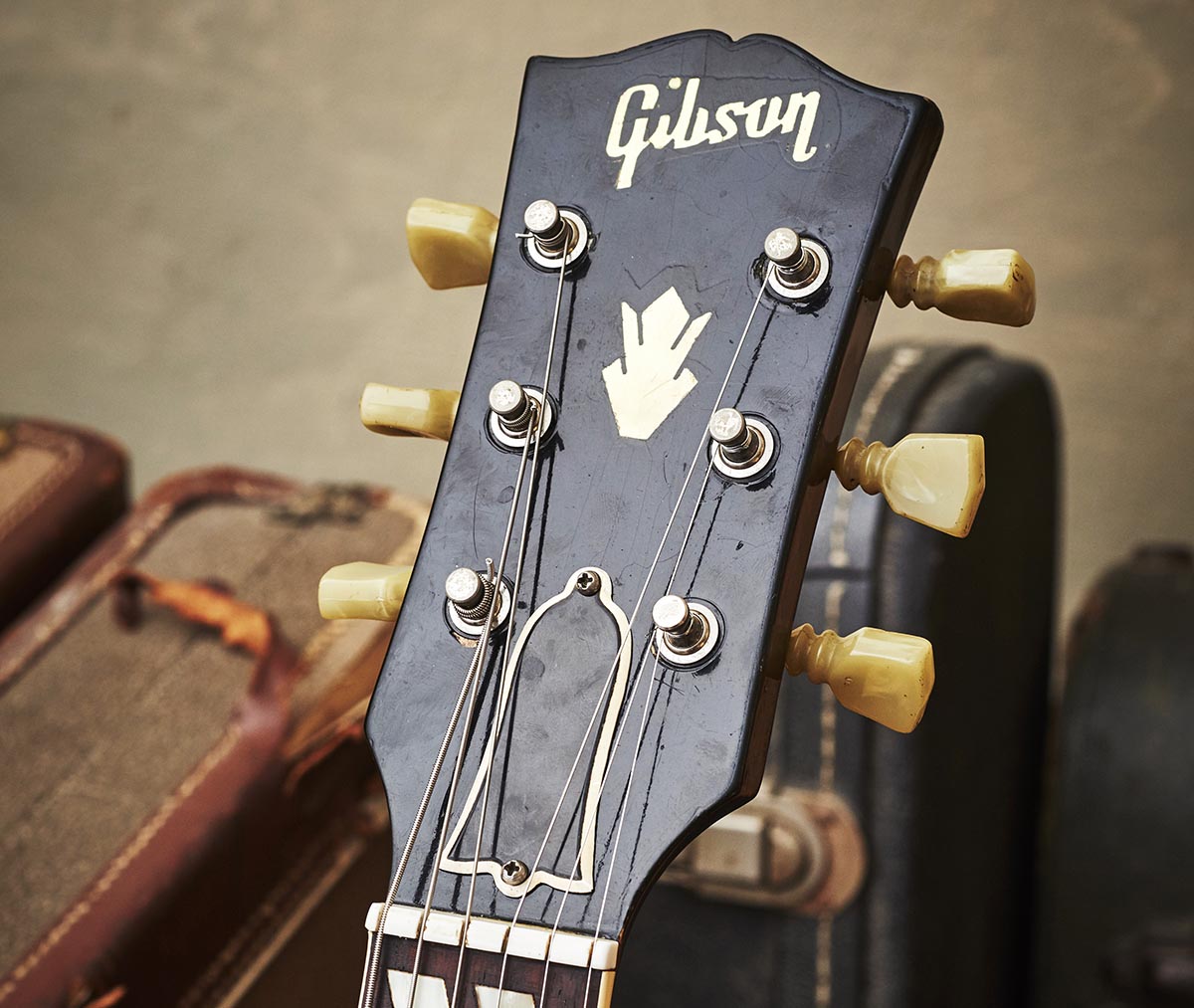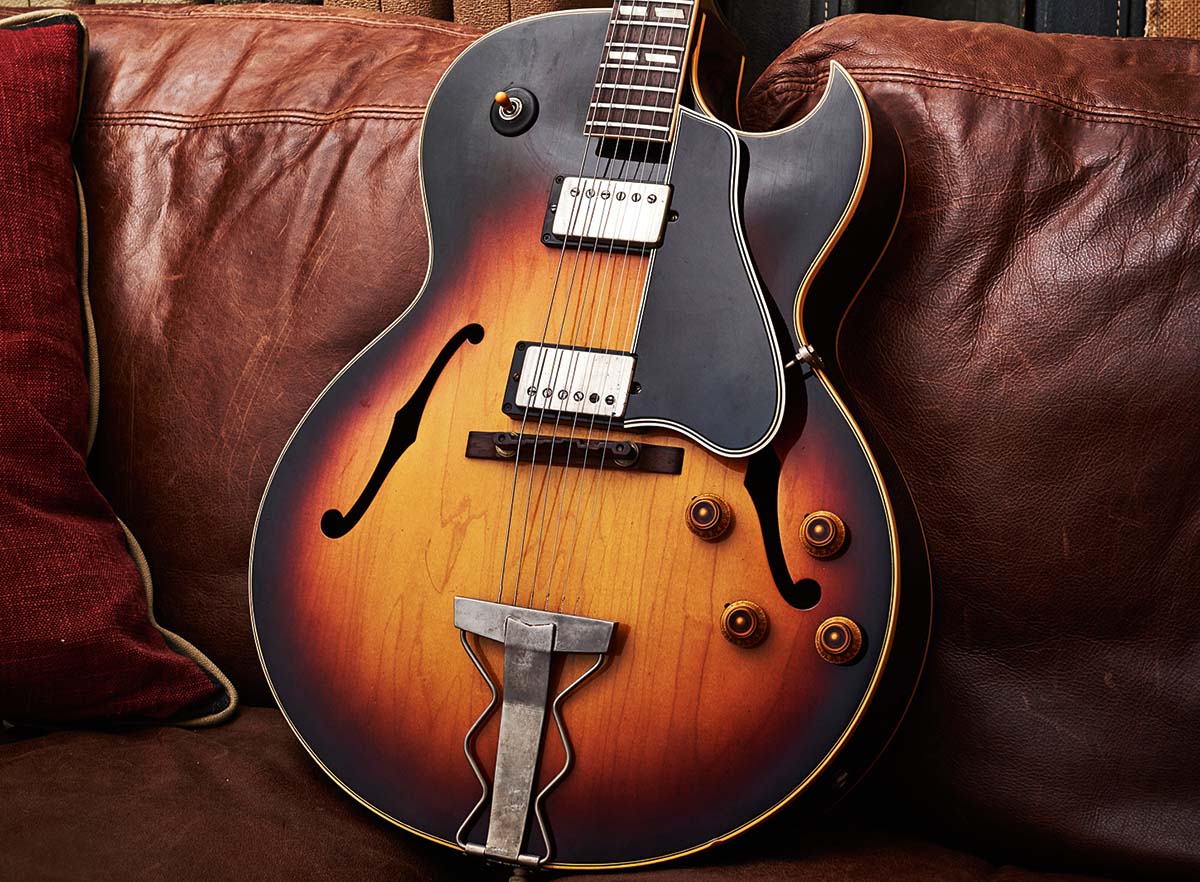Gibson ES-175: the hollowbody electric archtop that was a Gibson first
With its Florentine cutaway, this hollowbody electric archtop was a Gibson first

Following its release in 1949, the 175 proved to be one of Gibson’s most popular designs. Author Adrian Ingram calls it “Gibson’s most successful electro-acoustic guitar” in his book The Gibson ES175: Its History And Players, quoting an estimated 37,000 having been sold within its first half-century of production alone.
Like many classic guitars, the 175’s essential layout didn’t change a great deal after it came off the drawing board – its dynamic sound, comfy ergonomics and understated cool ticked all the right boxes from the start. This timeless design has consistently won guitar players over throughout the decades, and although it is perhaps more strongly associated with jazz virtuosos such as Joe Pass and Herb Ellis, it’s just as likely to be spotted in the hands of rock guitarists like Steve Howe and John Frusciante.
The 175 came about during a turning point in Gibson’s history. Having acquired the company in 1944, Chicago Musical Instruments’ financial support aided Gibson in the pursuit of cutting-edge designs during the post-war years.
Still, chairman of the board at CMI, Maurice Berlin, was concerned about the Kalamazoo factory’s continued losses of “$100,000 per month”. It would take a young engineering graduate turned music industry executive named Ted McCarty to turn things around.

• 1949
ES-175 released; single pickup; sunburst or natural finish
• 1952
ES-295 released; dual pickups; all-gold finish
• 1953
ES-175D released; dual pickups; sunburst or natural finish Mid-50s Some with ‘alnico’/‘staple’ pickups (rare)
• 1955
20 frets (previously 19)
• 1956
Zig-zag ‘T’-shaped tailpiece replaces pointed trapeze tailpiece
• 1957
PAF humbuckers replace P-90s 1958 ES-295 discontinued
• 1959
Natural-finish ES-175 discontinued
• 1971
Sunburst finish ES-175 discontinued
Having resigned from Wurlitzer, Ted joined Gibson in 1948 and was immediately tasked with reversing its ailing fortunes by modernising the firm. That year, Ted expanded Gibson’s electric range with a pickup-loaded scratchplate design.
Later known as the ‘McCarty unit’, this innovation came in either single- or dual-pickup formats for cutaway and non- cutaway guitars and led to the addition of several new electrified archtop models based on the L-7 acoustic.
As per Gibson’s pre-war electrics, however, these guitars were constructed with solid tops, backs and sides, and Ted’s focus soon shifted to the newer laminate body ‘ES’ (“electric Spanish”) line with the aim of developing a mid-priced cutaway model.
Get The Pick Newsletter
All the latest guitar news, interviews, lessons, reviews, deals and more, direct to your inbox!
With a sunburst finish and costing $175 upon its release in 1949, the ES-175 had a Florentine/sharp cutaway, which was a Gibson first. Featuring double- parallelogram fretboard inlays along with a pearl Gibson logo and ‘crown’ headstock inlays, it was introduced alongside its acoustic equivalent, the L-4C.

The ES-175 has the same full 3 3/8-inch body depth that was standard for all other ‘ES’ guitars back then, though many players found its width of 16 ¼ inches to be more comfortable than the broader 17-inch-wide ‘ES’ guitars of the time, namely the ES-150, ES-300 and ES-350.
The original ES-175 is a single (neck) pickup guitar, although dual-pickup instruments were custom ordered in the early 50s on occasion. It wasn’t until 1953 that the officially designated ‘D’/ dual pickup version – the ES-175D – was released. This followed the arrival of the
$295 ES-295 in 1952 – a fancy all-gold finish guitar with dual pickups that was itself inspired by the ES-175 and marketed as the archtop companion to the ‘Goldtop’ Les Paul Model.
While the ES-295 and ES-175 were discontinued in 1958 and 1971 respectively, the ES-175D went on to become one of the most enduring electric guitars ever designed by Gibson.
- Guitarist would like to thank Vintage ‘n’ Rare Guitars in Bath, UK.
Rod Brakes is a music journalist with an expertise in guitars. Having spent many years at the coalface as a guitar dealer and tech, Rod's more recent work as a writer covering artists, industry pros and gear includes contributions for leading publications and websites such as Guitarist, Total Guitar, Guitar World, Guitar Player and MusicRadar in addition to specialist music books, blogs and social media. He is also a lifelong musician.
“It holds its own purely as a playable guitar. It’s really cool for the traveling musician – you can bring it on a flight and it fits beneath the seat”: Why Steve Stevens put his name to a foldable guitar
“Finely tuned instruments with effortless playability and one of the best vibratos there is”: PRS Standard 24 Satin and S2 Standard 24 Satin review











